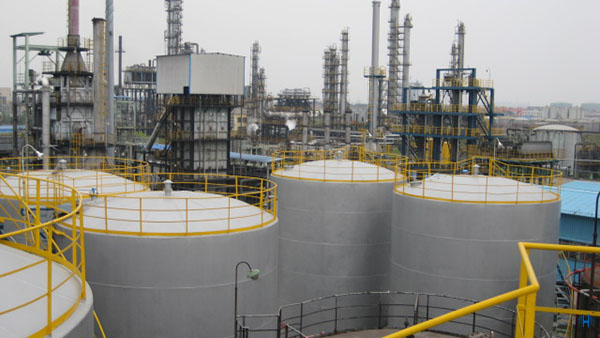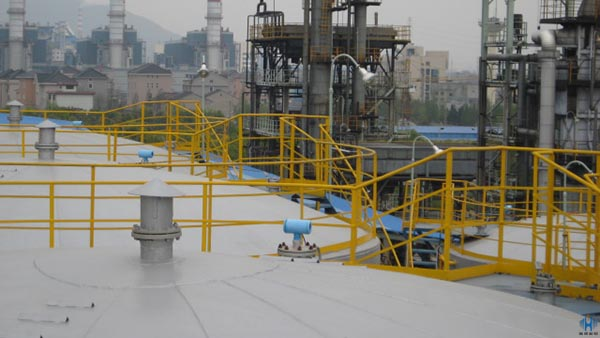Sulphuric acid storage tanks occupy an important position in the smelting industry, and the accuracy of the liquid level is directly related to the continuity of smelting production and the safe and smooth operation of automated smelting production. Therefore, when selecting and installing radar level meters, the following common problems should be noted.
First, pay attention to the characteristics of the liquid medium in the storage tank. Sulfuric acid storage tanks are different from other media, it has concentrated sulfuric acid and dilute sulfuric acid. Concentrated sulphuric acid has water absorption, strong corrosion, and strong oxidation. Dilute sulphuric acid does not have the characteristics of concentrated sulphuric acid at all, but it has the generality of acid. Therefore, when choosing a radar level meter, it is important to pay attention to the concentration of the medium in the tank. Usually, the concentration of sulphuric acid in a smelter’s sulphuric acid storage tank is 98%, which is concentrated sulphuric acid. Radar level meter material tries to use PTFE (polytetrafluoroethylene), this material has a strong resistance to acid and alkali.

Secondly, pay attention to the input and outflow of sulphuric acid. When sulphuric acid is inflowing and outflowing, the liquid level will fluctuate greatly and affect the measurement. When installing, be careful to keep away from the inlet and outlet to avoid errors in the inlet and outlet measurements
Third, pay attention to the impact of liquid level fluctuations on the echo signal. I once read a report which recorded that a smelter installed a radar level meter in a sulphuric acid storage tank and chose a tilted installation method with a tilt angle of about 14°. As a result, the level could not be measured. After investigation, it was found that the electromagnetic waves emitted by the radar level meter reached the tank steel plate and the false echoes were too large to interfere with the real echoes. After adjusting the installation position and adding a reflection plate, the radar level meter measured accurate data and operated normally.

In addition to being corrosive, sulphuric acid is also volatile. Different plants, different production processes, and sulphuric acid storage tanks will be different, the range will be different, and even the characteristics shown will be different. Therefore, when choosing a radar level meter, you must understand the characteristics of your working conditions, understand the characteristics of the measured medium, and even know what kind of situation will occur during the production process, such as whether there will be high temperatures, whether there will be foam generated, and so on.
